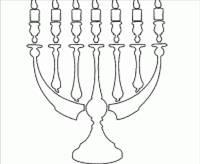Revelation: Four Living Creatures
THE REVELATION
Scripture Verse (Rev. 4:8): “The four living creatures, each having six wings, were full of eyes around and within. And they do not rest day or night, saying, “Holy, holy, holy, Lord God Almighty, Who was and is and is to come!”
Objectives:
- Students should memorize the verse.
- Students should understand the context of these words in the Divine Liturgy.
Background of the book:
The Revelation was written by St. John the Apostle while in exile on the island of Patmos during the fierce persecution of the Emperor Diocletian around AD 95. The early Church believed that the second coming of Jesus Christ was near, especially in these times of persecution. John is reminding them to hold fast their faith in tribulation and assuring them of the ultimate triumph of the Kingdom of God. While chapters 2 and 3 are clearly letters written to individual churches of the day, much of the book is prophetic and is full of vivid and sensational imagery. Because this book can be so easily misinterpreted (and has been in Church history), it is the only book not read publicly in the services of the Orthodox Church.
Possible Lesson Plan:
- Open with prayer.
- Review the background of the book. Find Patmos on the map.
- Read through chapters 2 and 3, assigning one church to each student:
Ephesus 2:1-7
Smyrna 2:8-11
Pergamos 2:12-17
Thyatira 2:18-29
Sardis 3:1-6
Philadelphia 3:7-13
Laodicea 3:14-22
Find those places which still exist on a map. What is the Lord’s major message to each?
- Read Revelation 4:6-11: There are Old Testament references to the four living creatures in Ezekiel (1:5,18,21) and Isaiah (6:2). Who are represented in traditional icons in the form of man, lion, calf, and eagle? (Matthew, Mark, Luke, and John).
- Look at a book of the Divine Liturgy. Read the “Cherubic Hymn”: “Let us who mystically represent the cherubim and who sing the thrice holy hymn to the life-creating Trinity now lay aside all earthly cares…” and the Trisagion Hymn: “Holy God, Holy Mighty, Holy Immortal…”, another version of the thrice holy hymn. So in Liturgy we join the heavenly liturgy of the angels. Sing both hymns if so inclined to review them with the students.
- The 4 living creatures do not rest night and day in their praise, but pray unceasingly. This is the ideal of the Orthodox Christian, approximated in many monastic communities. How can we enter into this divinely unceasing cycle of worship? How is worship different from prayer of petition? Brainstorm a list of some ways we can pray unceasingly. Are there times and places where prayer is difficult? At school? In the car? At home? At mealtime? Can prayer be included even at these times? Use today’s verse for worship. Have each student find another example of worship from chapters 4 and 5 and write it on a card. Can we remember to worship at least once an hour? Twice an hour? Why or why not?
- Make a Bible cover: Take a piece of white paper about 12x18 inches. Fold to cover Bibles of students. On the front and back, glue the faces of the 4 Evangelists from old bulletins. Then have the students draw the bodies of the four living creatures: Man for Matthew, lion for Mark, calf for Luke, and eagle for John. Write “The Bible” on the spine, along with the student’s name.
Easier? Just size the book cover to your paper with the four evangelists on the front and the four living creatures on the back. Color, and be sure the students label the living creatures.
 Alternate craft idea: Make ahead of time circles of paper, one of each of seven colors for each student, whole punched in the top of each. Have each student, as he prepares one of the seven churches, choose one color of circle and write on one side the name of the church and on the other a simple line drawing of something from the reading that drew his attention (like a frowny face for bad tasting). Trade “Revelation cards” among classmates so each has a complete set of seven. Tie a string thru the hole and hang from a hanger as a mobile. If you want, decorate the hanger as a 7-branched candlestand.
Alternate craft idea: Make ahead of time circles of paper, one of each of seven colors for each student, whole punched in the top of each. Have each student, as he prepares one of the seven churches, choose one color of circle and write on one side the name of the church and on the other a simple line drawing of something from the reading that drew his attention (like a frowny face for bad tasting). Trade “Revelation cards” among classmates so each has a complete set of seven. Tie a string thru the hole and hang from a hanger as a mobile. If you want, decorate the hanger as a 7-branched candlestand.
- Bring your boom box and play the last part of Handel’s “Messiah”. Where is the reference that Handel used?
- Close with prayer. Encourage students this week to join the four living creatures in praying unceasingly – or at least throughout the day.